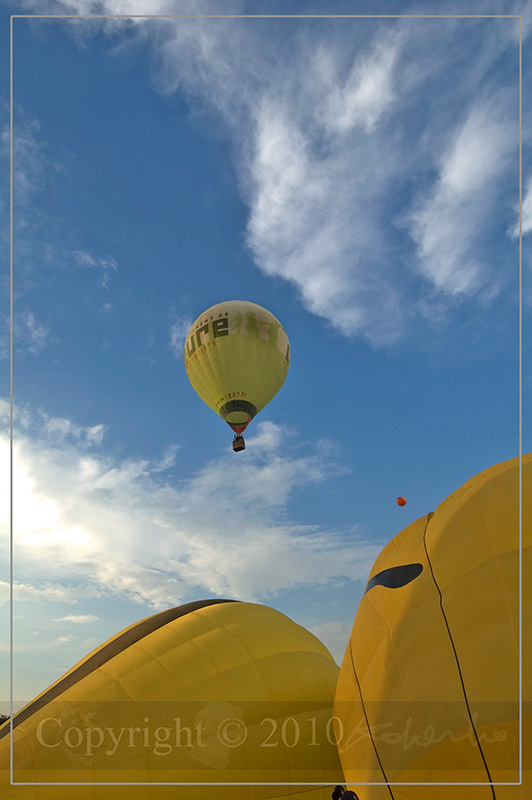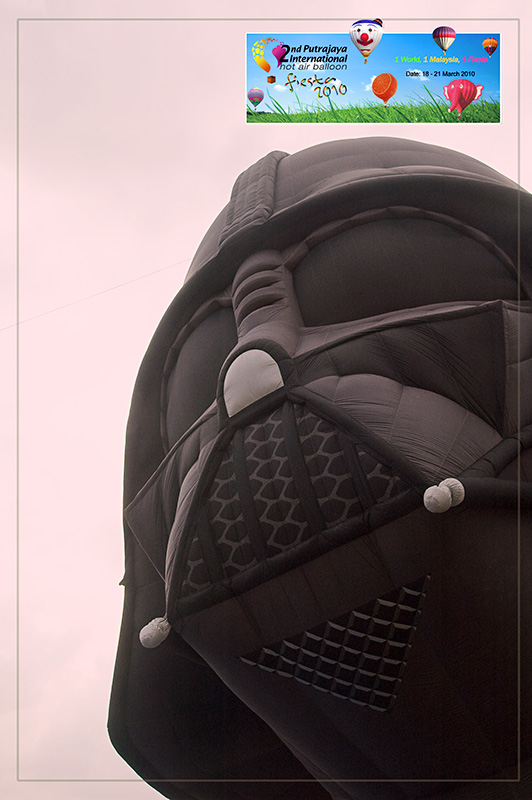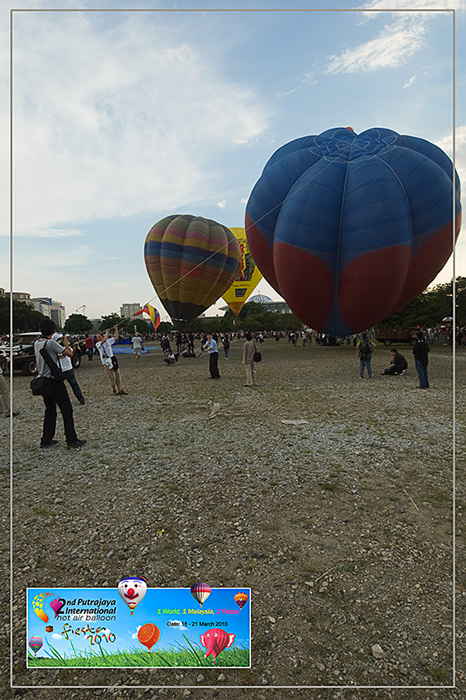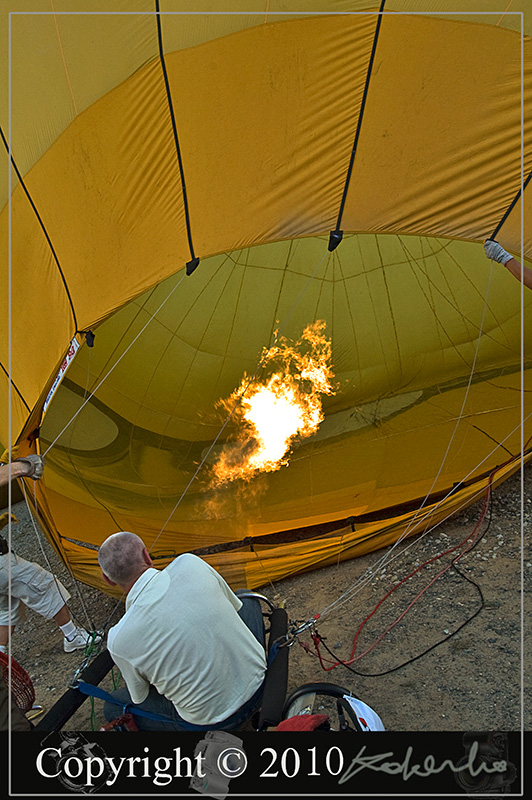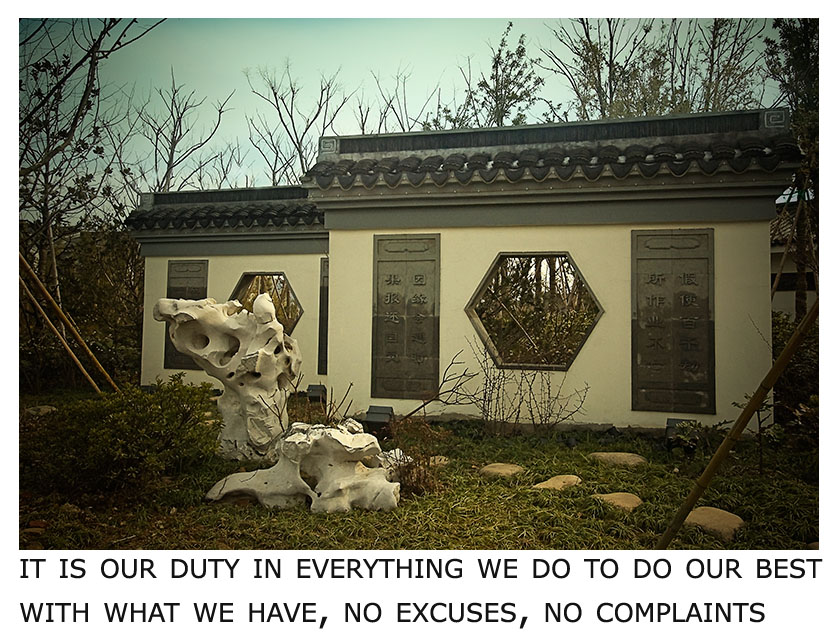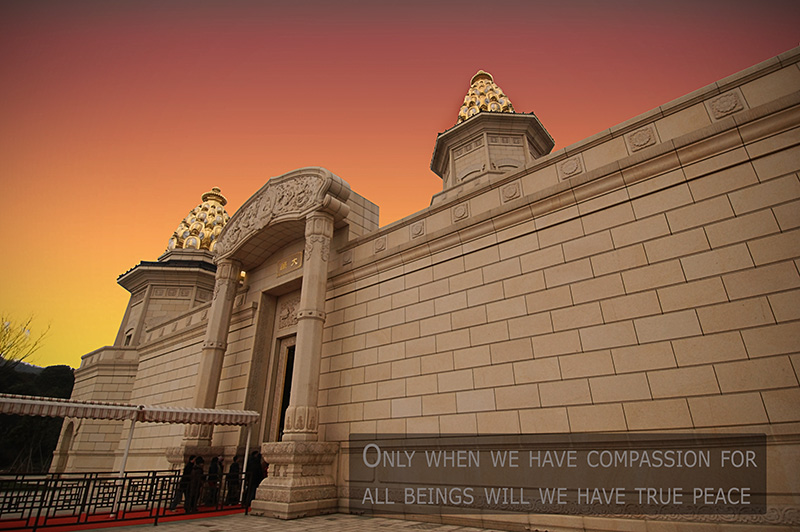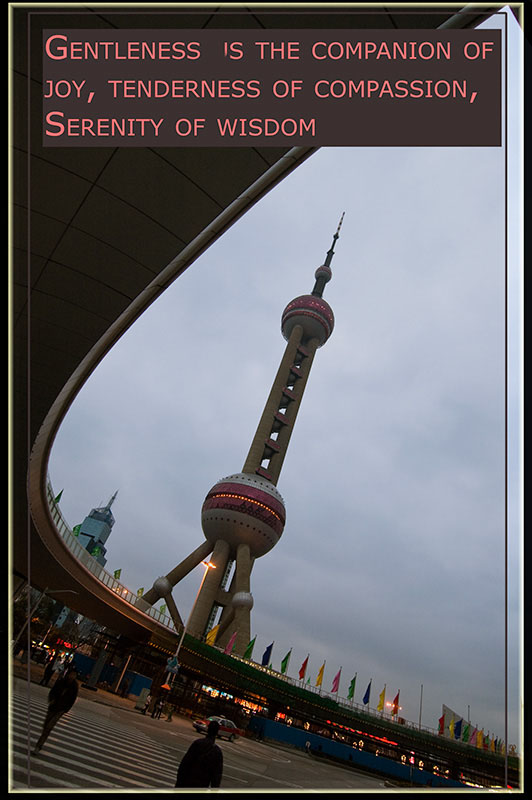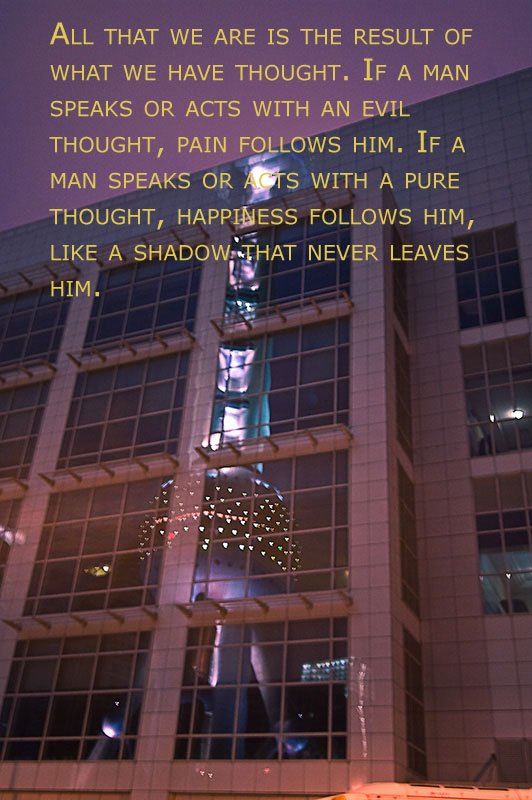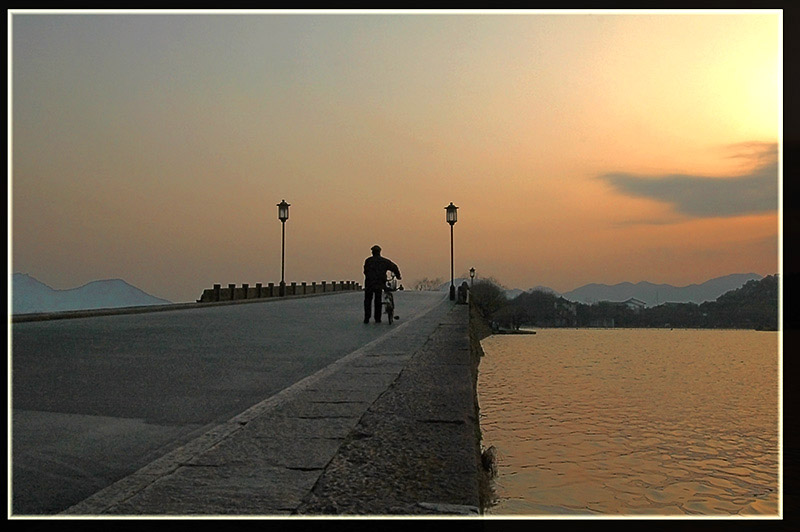Monday, March 29, 2010
Thursday, March 25, 2010
Watch F1 practice at Sepang for free
Watch F1 practice at Sepang for free

Watch the Friday practice sessions for free at the upcoming Malaysian GP. — Reuters pic
SIC Chief Executive Officer Razlan Razali said visiting fans would be able to have a firsthand look at teams and their crew, setting up the cars for practice, on April 2, starting 5pm.
“We are expecting about 6,000 visitors to flood the SIC Circuit because a similar exercise for the MotoGP saw about 4,000 fans turning up,” he told reporters at the Classic Cars exhibition at the Pavilion shopping mall here.
Five classic F1 cars from the 1980s and 1990s would be displayed at the Pavilion until April 1 while the Malaysian GP is slated from April 2-4.
Razali added that SIC had also registered an increase of 20 per cent in ticket sales compared with the same period last year.
“This is a very encouraging development and I am confident the sales will increase to 30 per cent soon,” he said. — Bernama
Sunday, March 21, 2010
Cooking tips
Sunday March 21, 2010
Desperate dad cooking tips
STRAY THOUGHTS By A .ASOHAN
Single fathers who are lousy cooks, help is on the way!
A COUPLE of weeks ago, in a moment of madness that lasted several hours, I posted some cooking tips for single fathers on social media and micro-blogging site Twitter.com.
Somebody there suggested I write a cookbook. That requires actual effort, something that single fathers can barely spare the time for – especially when they are lazy like me – so I’ve decided to take the easy way out and elaborate on the tips here in my column.
The decision was also reinforced by the fact that the number of cooking tips I know can barely fill a page, let alone a book, but let’s not belabour the point, eh?
These tips will help you prepare delicious and nutritious meals for the little devils ... er, I mean little ones.
They will be especially helpful if you’ve never held a wok before – indeed, more so if you don’t even know what a wok is – because men who can actually cook would be struggling too much not to laugh or scoff to be able to concentrate. (For example, at this stage, a cooking show host would have said something droll like, “Let’s work that wok, boys!”)
These tips will not be very useful either for men who watch the Asian Food Channel, or who know the variant names of the humble eggplant (aubergine, brinjal, melongene – I know! I looked it up!).
When you’re a single father cooking for your children, it’s going to be pasta, curry or burgers.
·Libations: Unlike men who like cooking, you have to determine what kind of drinks you will need to expel as much of the dreariness of cooking as possible. Indeed, some over-indulgence here may even lead to you enjoying the whole thing. It’s a delicate balance, so beware.
The choice of what to drink while cooking is important. It’s wine for pasta, and beer for burgers and curry.
The type of wine depends on what kind of pasta sauce you’re making. Remember, it’s red for tomato-based sauces like bolognaise and white for the creamy stuff like carbonara.
White wine also goes with sauceless pasta dishes like aglio olio, where you fry up pasta with a bunch of stuff in – you guessed it! – a wok.
If you cannot remember such complicated combinations, just remember this: The colours must be coordinated.
When it comes to pasta sauces, when the kids are not looking (a “hey, looky there” directed away from the stove sometimes works), you might want to drop a squirt of red wine into the tomato-based sauce or white wine into the carbonara-like sauce just before it’s fully cooked.
If you’re especially ambitious and masochistic, and have decided to cook something other than pasta, curry or burgers, then you will need a stiff drink: tequila, whiskey or rum will do.
·Butter it up: Everything – and I do mean everything – tastes better with butter. Except curry.
Okay, everything other than curry tastes better with butter.
·Pasta tips: If you’re making a tomato-based pasta sauce, first open that jar you bought from the supermarket. Let it sit for a while as you make the other preparations.
Now dice up a lot of garlic. Remember, this is an Italian dish, so there’s no such thing as too much garlic.
Drop a dollop of butter – remember, there’s no such thing as too much butter – into a deep pan, put it on the stove over a medium-low flame and, just before the butter completely melts, add olive oil. As the oil heats up, drop two or three chopped up chilli padi. This gives your sauce a tangy taste. When the oil-butter mix starts to bristle (or whatever the technical term is), add the garlic – as with butter, there’s no such thing as too much.
When the garlic starts to turn golden, add the ground beef if you’re using any. As it starts to sizzle, add four or five halved baby tomatoes or one tomato cut into eight wedges. This offsets the chilli taste.
Once the tomato starts to soften, you can start adding the oregano and “stuff” (see below), and when the meat is cooked, the ready-made sauce. From the jar. That you bought from a supermarket.
Liven up the whole experience by getting the kids to sing, “Papa makes the best pasta” or healthy, family-centric activities like that.
·Stuff: “Stuff” is an all-encompassing, technical term for all the herbs and spices whose name you can’t remember.
Don’t be afraid to experiment with stuff, in either your curry or pasta sauce. Curry is more forgiving of such wild abandon. Just do so with judicious amounts. If it all goes wrong, tell the kids the meat was bad.
You can cook corned beef the same way. Corned beef hash is an unholy mess anyway, so don’t be too afraid to experiment with sauces and stuff. These include HP Sauce, Lea & Perrins, grated cheese, chilli powder, etc – just make sure not to use too much of any one thing.
If you’re going for a more Westernised hash to be spread on bread, use more grated cheese. For the Asian version to be eaten with rice, use sliced green chilli and more of those small reddish onions whose actual name I can’t remember. (They may be called shallots, but that creates images of crustaceans in my mind, so I may be completely off the mark here.)
·Onions and weird stuff: Yeah, the stuff that’s neither meat nor vegetable. Here’s a tip: Keep your onions refrigerated. Not only do they keep longer this way, they also cause fewer tears when you cut them.
(Note: The “your onions” above was not a euphemism for anything else!)
Of course, macho men do not need to worry about their eyes tearing, ‘cos we all know that real men don’t cry.
Rule of thumb: Diced onions for curry and pasta sauces, sliced for vegetable dishes.
Another rule of thumb: Rules are made to be broken.
·Burgers: Thawing meat using the microwave oven is the last resort of a desperate man – don’t tell anybody you do it.
If you want the best burgers, you have to make your own patties. This means marinating the ground beef overnight with a beer-based do-it-yourself Canadian sauce.
But you’re cooking for your kids. They don’t need cordon bleu burgers. Ramly’s patties will do just fine.
·Kids in the kitchen: Safety should be paramount in your mind at all times, but it’s also good to get the kids to help out. You know, teach them responsibility and stuff (“stuff” used here in the non-spice context). All for noble, parenting reasons, of course.
The kids will want to cut up stuff. Say “No” and make them do all the washing up instead.
Remember, kids will always want to help out with chores unless they’re old enough to actually do them.
·And finally....: Always make sure you have a good exit strategy. McDonald’s, Domino’s, Canadian Pizza, any delivery service will do at a pinch. Make sure their numbers are on speed dial.
■ A. Asohan, Digital News Editor at The Star, will one day add to his culinary repertoire. Then again, perhaps not.
Friday, March 12, 2010
Wednesday, March 10, 2010
Monday, March 8, 2010
Friday, March 5, 2010
Preying on travellers
By JOLEEN LUNJEW
jlunjew@thestar.com.my
http://thestar.com.my/lifestyle/story.asp?file=/2010/3/6/lifetravel/5779843&sec=lifetravel
Asia is a vibrant travel destination but there are plenty of unscrupulous individuals trying to make a quick buck out of unsuspecting tourists. Be smart and don’t be caught unawares.
You’ve heard many horror stories of tourists getting scammed as they travel around Asia. Sometimes it’s money, sometimes, much worse than that.
Know before you go: Check Lonely Planet guide books for scams in the Dangers and Annoyances section. – CHRIS LIM / The Star
Of course, you always think that you’re smart enough not to get conned.
But are you?
Touts have perfected the art of scamming so well that it is very easy to fall into their traps. Being an avid traveller myself, I find the warnings in Lonely Planet guides very helpful. The guides usually have Danger and Annoyances sections for each country as well as for specific cities.
Here are some common scams you should be aware of:
Gem scam Bangkok, Thailand
“This is one of the oldest thriving scams in Bangkok. Many travel warnings have been issued but people still fall for this trick, even myself,” jokes Samuel Prabhakaran, 48, who has been working in Bangkok as a general manager for an ICT company for 1½ years.
Samuel explains that the scam usually takes place around the Grand Palace where a “uniformed official” will tell you that the palace is closed because the King is there or some special ceremony is going on. He will then suggest visiting another temple first with a tuk-tuk driver (who’ll conveniently be there) and to return to the Grand Palace later.
The friendly tuk-tuk driver will start telling you about a special government promotion on gems just for the day or an ultra-exclusive closing down sale that he knows of. He will then bring you to a store where you will be tricked into buying worthless pieces of glass that are being passed off as gems.
Be careful when buying gems in Bangkok.
“The scam works with other products, too, such as gold, silver, silk or whatever you are interested in. The drivers get a commission from the shop owners if the customers buy something. I was with my sister, and my sister bought some gems. Till now, we do not know if they are real or not,” says Samuel.
Writer Andrew Sia, another avid traveller in his 40s, was fortunate enough not to get duped as he was already aware of the scam.
“I was heading towards the palace when someone approached me saying that the palace was closed. I ignored him and continued walking as I had read about the scam from Lonely Planet,” says Sia.
Sia thinks that the intervention of the government and the tourism board is essential in curbing and reducing scams.
“I am very impressed with what Thailand is doing as they have large signboards in front of popular tourist attractions warning people of possible scams. The gem scam was explained on a board in front of MBK Shopping Centre, a famous mall in Bangkok. There were signs at popular temples, too, warning people of fake guides who would lead you to shops for the gem scam or to purchase other products for commission,” adds Sia.
Samuel advises travellers not to believe outright what these “uniformed officials” say as they are all in the scam together.
“What you can do is go up to the main entrance and enquire for yourself. Many times, you will find that the Grand Palace is open for tourist visits, despite what you’re told.”
Batik scam Yogyakarta, Indonesia
Yogyakarta is known for its arts and crafts, but beware of the many scams here. Lonely Planet warns of a batik scam that is quite common in the area but teacher Christina Fernandez, 40, found out about it too late.
She was at a magazine shop with a friend when they were approached by a well-dressed man who spoke good English. The man said he was with a government-funded batik gallery and offered to take them to see the paintings which were just down the street.
The gallery was quite impressive with the batik paintings exhibited under A-Z categories, A being the top grade. The man even did the “real/fake batik test” by immersing the batik in water.
It is important to gain some knowledge on batik before buying in Yogyakarta.
“He told us you could tell fake from real batik by submerging it in water as real batik doesn’t run but we found out later from Lonely Planet that the operators have become more sophisticated in faking batik art by using a permanent dying process,” recalls Christina.
She ended up buying two batik pieces for about RM80 each.
“Until today, I don’t know if my batik pieces are fake or not but I felt that they were worth it because I really liked them. The designs are abstract, modern and unique. I guess you should pay what you are comfortable with. We were lucky as the officials at the tourist office said that some have been cheated of a huge sum of money.”
Tuk-tuk/taxi scams Bangkok, Jakarta, Cambodia, Vietnam, Manila, Kuala Lumpur
This scam happens almost throughout Asia. You hail a tuk-tuk or a taxi, the driver brings you to your destination, and there is disagreement over the fare.
“Make sure you agree on the price BEFORE you get on the tuk-tuk,” says project manager Edmund Lou who has been based in Phnom Penh, Cambodia, for more than half a year.
He stresses that you must agree beforehand on the price, the number of destinations, the duration of the ride and the number of passengers.
Travel scams: Use metered taxis whenever possible or agree on the price before you get on a tuk-tuk to avoid any altercations.
“If you want to go to several places, make sure you clarify it with the driver and tell him how long you’ll be at each place. Also, clarify if the price is for the whole tuk-tuk or one person. The driver might get rude and aggressive if there is a disagreement and get his friends to surround you.”
Sia experienced this show of aggression when he was in Ho Chi Minh, Vietnam.
“We agreed on the price to Chinatown with our cyclo driver beforehand but when we arrived at our destination, he quoted us double what we had agreed upon,” recalls Sia.
A shouting match ensued soon after.
“It was quite scary as there was a risk that he could harm us. A crowd was gathering because of the commotion, but luckily, I overheard some locals speaking in Cantonese. So I explained to the locals my side of the story and they scolded the driver instead. The driver relented in the end and agreed on the original fare.”
Indonesian TV host Mahartansyah Leksmana Indra, 28, advises tourists to make sure the taxis in Jakarta use the meter the moment they get into the vehicle.
“There are a few taxi companies that use meters but if you are in Jakarta, I would advice you to go with Bluebird as they are the most reliable.”
RS Balan, 47, business development director of loyalty card Orient Rewards, advises travellers to deal with reputable and reliable companies to avoid unnecessary hassle.
“We always tell our clients to find the hotel concierge if they want to arrange for any tour packages, or hire taxis or rental cars. Our hotel partners are trustworthy so our clients would not be cheated (by them),” says Balan.
Overweight luggage scam China
This scam mainly happens in China at transportation hubs. Travel writer Tom Glaister (www.tomthumb.org), 32, was walking along the streets of Kunming when he was approached by a friendly guy who introduced himself as the manager of the local bus station and said he wanted to improve his English.
Oversized or overweight luggage can attract touts in China. If something seems amiss, insist on calling the authorities.
“During our small talk, stupid me, I gave out the details of my departure to Vietnam the next day,” recalls Glaister. “I had forgotten about the guy until I saw him waiting for me at the bus station. He was very happy to see me and boarded the bus to show me where my berth was for the night.”
The “manager” took his ticket and said that everything was in order except for one thing — his backpack was overweight.
“This raised a red flag as I was in a bus, not a plane! He wanted me to pay for the excess weight, and I refused to cooperate or believe him, branding him a con. He said I could talk to the bus station security (they were certainly involved in the con, as was the waiting bus driver), but I insisted on calling the police.”
After verbally abusing, intimidating and even trying to hit him with a chain, the “manager” gave up after 30 minutes and the bus drove off.
“I was quite scared as I didn’t know whether he tampered with or removed my luggage or if the bus driver would drop me off in the middle of nowhere since I did not have my ticket any more. Later on, almost every backpacker I met who had taken the same route told me they had been conned by that same man!”
Writer Abby Lu, 29, was a victim of the overweight scam as well when she travelled around China for work two years ago.
“I was at the Guangzhou Airport when this guy with an official-looking tag approached me at the check-in counter,” says Lu. “I was checking in this big, red suitcase which was slightly overweight, but in my experience, domestic flights were never particular about weight anyway.”
The guy told her she had to pay for the excess weight but he could “settle” it for her at a reduced price as he had connections.
“The check-in girl was in on the scam, too, because she said the same thing. She allowed me to check in my luggage but told me I had to follow the guy to pay the excess charges.”
Lu then asked whom she had to pay and the guy said to pay to him.
“At that moment, I knew I was being conned but since I was alone, I didn’t want to risk any trouble and gave him half of what he demanded.
“My Chinese colleagues later confirmed my suspicions and said that domestic flights didn’t charge for excess weight. They advised me to ignore these people and report them to airport authorities if I was ever approached again.”
Nightclub scam Patpong, Bangkok, Thailand
This scam has been going on for a very long time, ensnaring many unsuspecting victims in the red light district of Patpong, Bangkok, into parting with their cash. The modus operandi is simple: After being bombarded with promotions by sleazy characters, you will be approached by a decent-looking elderly lady who seems to offer a good deal.
Be very cautious when visiting nightclubs, especially those featuring adult entertainment in Patpong, the red light district of Bangkok. Ask about all hidden costs before going into any of these joints.
“We were bombarded left and right with offers to see Patpong’s famous ‘tiger shows’ but we ignored all these dubious characters. However, curiosity got the better of us and we relented after this nice older-looking lady approached us and told us we could go in for free if we paid 100 baht (RM10) for a beer each,” recalls sales manager Koay Sue-Lyn, 30.
“The girls there were the ugliest we had ever seen and the place was really shoddy. We decided to call for the bill.”
The party of four had a shock when the bill came to around 8,000 baht (RM800).
“The waitress showed us a small card on our table stating that it was 1,500 baht (RM150) to look and 500 baht (RM50) for a bottle of beer each!
“We didn’t have that much money with us so we argued with them, and that’s when the big bouncers came and surrounded us. It was either we paid our bill, or we wouldn’t see daylight again.”
Koay and her friends managed to reduce the price to about 5,000 baht (RM500).
“It was a very expensive lesson indeed, the most I ever paid for a bottle of beer. I found out later that some of my other friends and even my father fell for this same scam,” she says.
“We are aware of this scam but we don’t warn the customers as that is how the club makes money,” says Mongkun Nuntharat, 25, a nightclub bouncer in Bangkok.
“Many still fall for it as they are curious to see the shows. But we do have legitimate clubs that display all the prices. My advice is to trust your gut instinct and ask about all the hidden costs before agreeing to follow anyone.”
Shanghai bund 4 photos montage

four photos that were meant to tell a story of a cold night and a windy zero degrees evening. Located at Shanghai bund where the lights comes mainly from the city skyscapers and old British colonial buildings. The bund itself is rather enormous. Much to the appeal of light ferries and medium yatches that uses the bund for tourism and other sporting needs.
Tuesday, March 2, 2010
Cheng Huang Miao, Shanghai.....part 3

The fool thinks he has won a battle when he bullies with harsh speech,
but knowing how to be forbearing alone makes one victorious.
Samyutta Nikaya I, 163
Solitude is happiness for one who is content, who has heard the Dhamma and clearly sees.
Non-affliction is happiness in the world - harmlessness towards all living beings.
Udana 10
Cheng Huang Miao, Shanghai.....
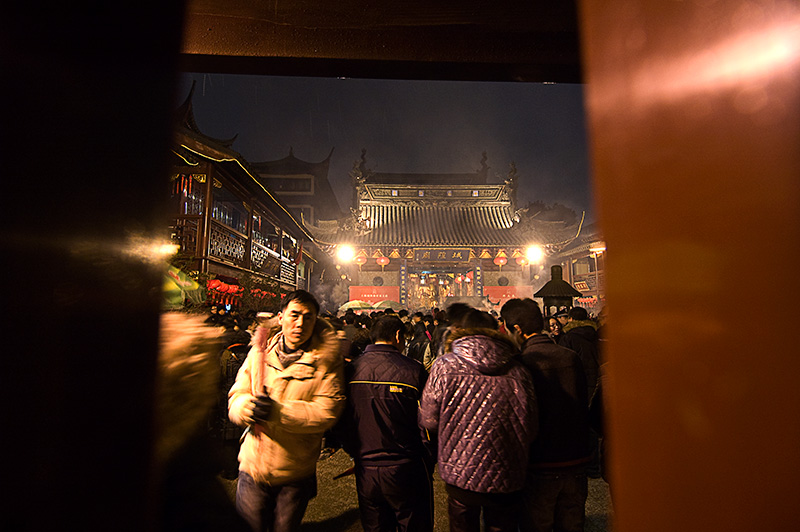
Bodhidharma
All know the Way, but few actually walk it.
If you don't find a teacher soon, you'll live this life in vain. It's true, you have the buddha-nature. But without the help of a teacher
you'll never know it. Only one person in a million becomes enlightened without a teacher's help.
If, though, by the conjunction of conditions, someone understands what the Buddha meant, that person doesn't need a teacher. Such a person has a natural awareness superior to anything taught. But unless you're so blessed, study hard, and by means of instruction you'll understand.
Cheng Huang Miao, Shanghai.....

The greatest achievement is selflessness.
The greatest worth is self-mastery.
The greatest quality is seeking to serve others.
The greatest precept is continual awareness.
The greatest medicine is the emptiness of everything.
The greatest action is not conforming with the worlds ways.
The greatest magic is transmuting the passions.
The greatest generosity is non-attachment.
The greatest goodness is a peaceful mind.
The greatest patience is humility.
The greatest effort is not concerned with results.
The greatest meditation is a mind that lets go.
The greatest wisdom is seeing through appearances.
Atisha
In criticizing, the teacher is hoping to teach. That's all.
Bankei
sourced: http://www.viewonbuddhism.org/resources/buddhist_quotes.html
Monday, March 1, 2010
Differences Between Theravada and Mahayana Buddhism
Differences Between Theravada and Mahayana Buddhism
sourced: http://www.religionfacts.com/buddhism/fastfacts/differences_theravada_mahayana.htm8 major schools: four practice-based (Zen, Pure Land, Vajrayana, Vinaya); four philosophy-based (Tendai, Avamtasaka, Yogacara and Madhyamika)
Theravada | Mahayana | |
| Location | Southern (Sri Lanka, Thailand, Burma, Laos, Cambodia, parts of Southeast Asia) | Northern (Tibet, China, Taiwan, Japan, Korea, Mongolia, parts of Southeast Asia ) |
| Schools and Sects | One surviving school (as many as 18 existed at one time) | |
| Buddhist Scriptures | Pali Canon/Tripitaka only | Books of the Theravada Tripitaka plus many other sutras (e.g. Lotus Sutra) |
| Buddhas | Historical Buddha (Gautama) and past Buddhas only | Gautama Buddha plus Amitabha, Medicine Buddhas, and others |
| Bodhisattvas | Maitreya only | Maitreya plus Avalokitesvara, Mansjuri, Ksitigarbha and Samanthabadra |
| Goal of Training | Arhat | Buddhahood via bodhisattva-path |
| 3 Buddha Bodies (Trikaya) | Very limited emphasis; mainly on nirmana-kaya and dharma-kaya | Emphasized, including the samboga-kaya or reward/enjoyment body |
| Original Language | Pali | Sanskrit |
| Language of Transmission | Tripitaka is only in Pali. Teaching in Pali supplemented by local language. | Scriptures translated into local language. |
| Buddha's Disciples | Historical disciples described in Scriptures | Many bodhisattvas that are not historical figures |
| Mantras and Mudras | Some equivalent in the use of Parittas | Emphasized in Vajrayana; sometimes incorporated in other schools |
| Bardo (Limbo) | Rejected | Taught by all schools |
| Non-Buddhist Influences | Mainly pre-Buddhist Indian influences like concepts of karma, sangha, etc. | Heavily influenced by local religious ideas as transmitted to new cultures (China, Japan, Tibet). |
| Buddha Nature | Not taught | Emphasized, especially in practice-based schools |
| Rituals | Very few; not emphasized | Many, owing to local cultural influences |
Shanghai view, in the park

- Dukkha (suffering)
- Samudaya (suffering has a cause)
- Nirodha (suffering can be ceased)
- Magga (the way is The Noble Eightfold Middle Path)
Buddhism is sometimes confused as a pessimistic religion since it refers to the suffering in life. But this view fails to look at the entirety of The Four Noble Truths. It is not that all life is suffering, but rather that all unenlightened life is suffering. There can be suffering, but there is also a way out of the suffering and that is why there are four noble truths, not one.
The central teachings of the Buddha are called the Four Noble Truths. The first of these truths is that ordinary existence is suffering. The second is that suffering is caused by ignorance and craving. The third is that suffering can be transcended. And the fourth Noble Truth is the way and means to transcend suffering, which is The Noble Eightfold Middle Path.
sourced:
http://www.dhammawiki.com/index.php?title=The_Four_Noble_Truths
Xi Wu, West lake, hangzhao
The candle wax pussy willows

10 hindrances
From The Dhamma Encyclopedia
http://www.dhammawiki.com/index.php?title=10_hindrancesA Buddha is someone who is fully enlightened. A person who is fully enlightened, but not the Buddha of our time, is called an Arahant in Pali. Such a person has eradicated all ten hindrances to enlightenment:
- The belief in a permanent personality, ego
- Doubt, extreme skepticism
- Attachment to rites, rituals, and ceremonies
- Attachment to sense desires
- Ill-will, anger
- Craving for existence in the Form world (heavenly realms)
- Craving for existence in the Formless world (heavenly realms)
- Conceit
- Restlessness
- Ignorance
(from Anguttara Nikaya 10.13)
An anagami (non-returner) has completely eradicated the first five hindrances and never returns to earth or any other world system (planet, solar system). Such a person is re-born to a heavenly realm and attains enlightenment from there.
A sakadagami (once-returner) has eradicated the first three hindrances and greatly weakened the fourth and fifth; attachment to sense desires and ill-will. Such a person will be re-born to either the human or heavenly realm and will attain enlightenment there.
A sotapanna (stream-entrant) has eradicated the first three hindrances and will be re-born no more than seven more times and re-birth will either be as a human or a deva in a heavenly realm.
The beautiful view.
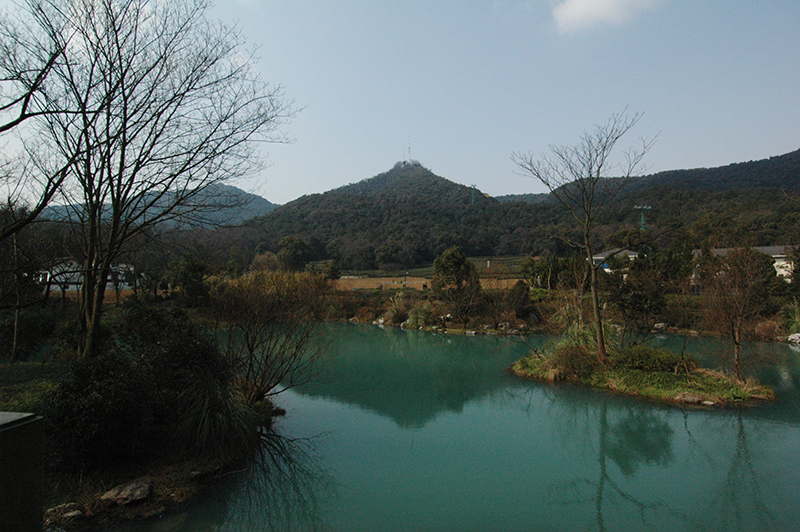
The Ten Paramitas are the ten perfections of the heart to cultivate in one's practice of the Dhamma.
The Ten Perfections
- Generosity (dana)
- Moral conduct (sila)
- Renunciation (nekkhamma)
- Wisdom (paññā)
- Energy (viriya)
- Patience (khanti)
- Truthfulness (sacca)
- Determination (adhitthana)
- Loving-kindness (metta)
- Equanimity (upekkha)
The Ten Hindrances to Enlightenment show us what we need to get rid of. To assist us in the eradication of the hindrances are ten virtues to cultivate, listed above. These are the Ten Paramitas, which are translated as, the Ten Perfections of the Heart.
In the Ten Perfections you will see elements of the Five Precepts and The Noble Eightfold Middle Path. Alongside these important Dhamma teachings are listed the ever important “energy” and “determination.” If we want to succeed at anything, we can never underestimate the importance of persistence and determination.
Renunciation, listed above does not necessarily mean giving up your possessions and becoming a monk or nun. Renunciation can simply mean being content with what you have and maintaining a simple life and lifestyle. It can mean “counting your blessings” or doing something simple to put your mind at ease to allow you to pursue spiritual quests. It can also mean making some small sacrifices, such as choosing your vacation time from work to go to a vipassana retreat, instead of a cruise.
The Buddha spent many past lives as an ascetic monastic perfecting each of the ten perfections. He could not be re-born in his final life as the Buddha until all ten perfections were fully developed. Enlightenment is not something so simple as just sitting one day and all of a sudden feeling at “one with nature” and very “awake.” There is a common danger in many Western countries where some practitioners and teachers say that they are enlightened when they have one momentary glimpse of jhanic pleasure in their meditation. They are mistaking some pleasurable jhanic states for enlightenment. Enlightenment is attainable, but no easy task and has the prerequisite of the ten paramitas.
sourced:
http://www.dhammawiki.com/index.php?title=10_Paramitas
The Budisht Relic Caves
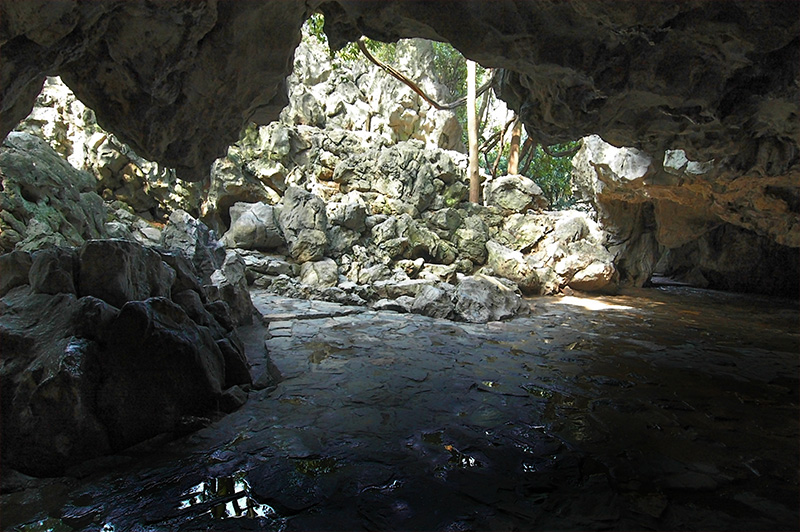
The caves house the scripture drawn on the walls of the caves. Smaller statues depicting Buddha or other Buddhist monks, masters are found in this cave. Located at Fei Lai Feng, Hangzhao.
The threefold division of the path
The Noble Eightfold Path is sometimes divided into three basic divisions, as follows:[5]
| Division | Eightfold Path factors | Acquired factors |
| Wisdom (Sanskrit: prajñā, Pāli: paññā) | 1. Right view | 9. Right knowledge |
| 2. Right intention | 10. Right liberation | |
| Ethical conduct (Sanskrit: śīla, Pāli: sīla) | 3. Right speech | |
| 4. Right action | ||
| 5. Right livelihood | ||
| Concentration (Sanskrit and Pāli: samādhi) | 6. Right effort | |
| 7. Right mindfulness | ||
| 8. Right concentration |
This presentation is called the 'Three Higher Trainings' in Mahayana Buddhism: higher moral discipline, higher concentration and higher wisdom. 'Higher' here refers to the fact that these trainings that lead to liberation and enlightenment are engaged in with the motivation of renunciation or bodhichitta.
Sourced: wikipedia
http://en.wikipedia.org/wiki/Noble_Eightfold_Path
visitor
The links that I keep
Blog Archive
-
▼
2010
(88)
-
▼
March
(22)
- Angkor in photos, Siem Reap at its best pt3
- Watch F1 practice at Sepang for free
- Angkor in photos, Siem Reap at its best pt2
- Angkor in photos, Siem Reap at its best
- 2nd Putrajaya International Hot Air Balloon Fiesta...
- Cooking tips
- Learning time
- 4x4 buggy.....photos only
- Shanghai view, Pearl tower.
- Master Chin Kung in Singapore (expo) for thrice ye...
- Preying on travellers
- Shanghai bund 4 photos montage
- bund pano
- Cheng Huang Miao, Shanghai.....part 3
- Cheng Huang Miao, Shanghai.....
- Cheng Huang Miao, Shanghai.....
- Differences Between Theravada and Mahayana Buddhism
- Shanghai view, in the park
- Xi Wu, West lake, hangzhao
- The candle wax pussy willows
- The beautiful view.
- The Budisht Relic Caves
-
▼
March
(22)













